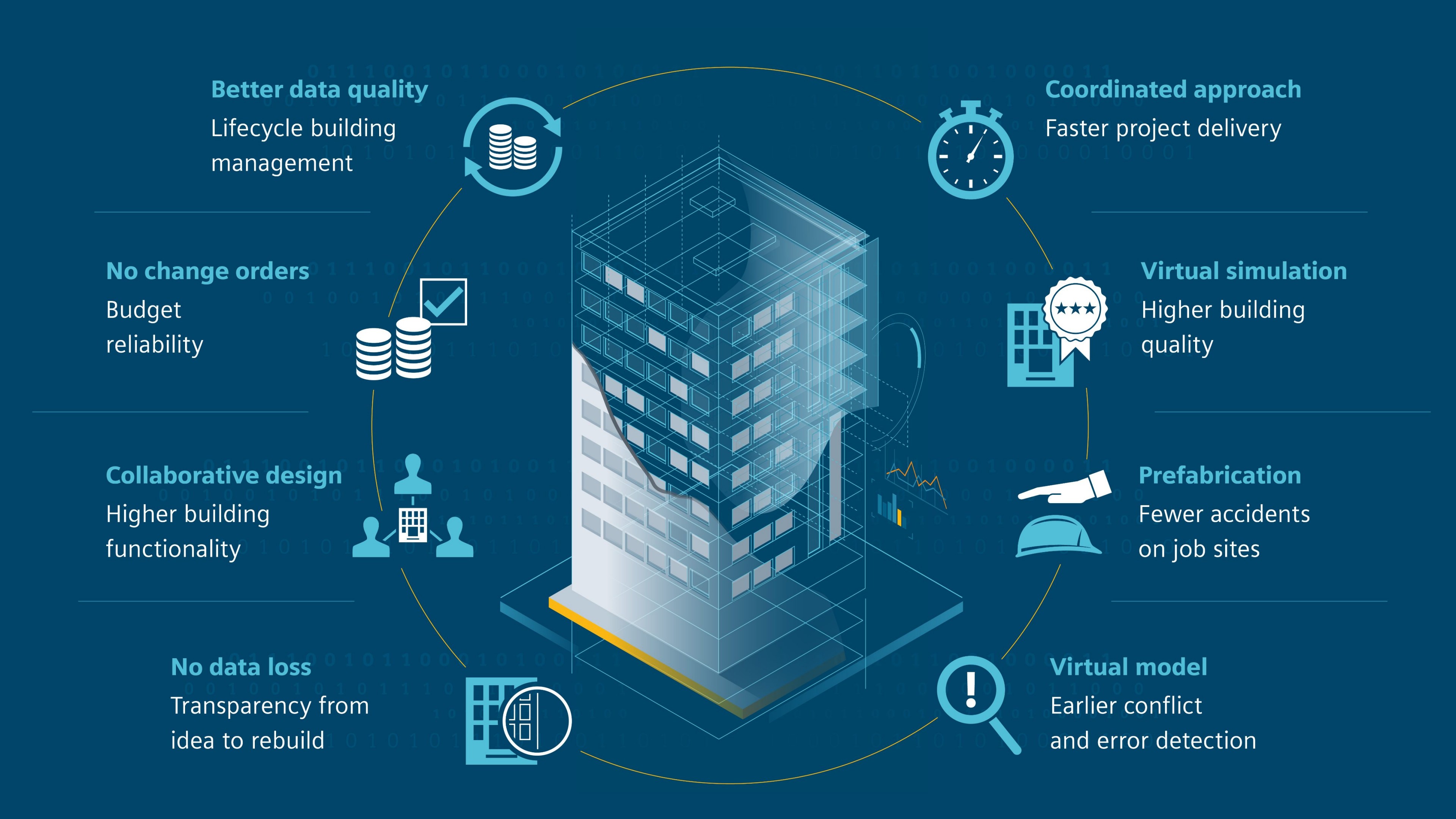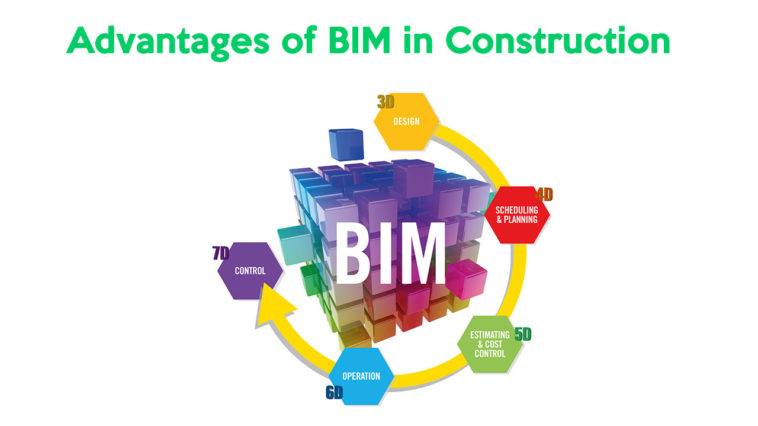The project management team can get lots of advantages by using BIM in construction. In this post, we are going to showcase 12 building information modeling advantages.
BIM has been the major point of discussion during the last couple of years, but there are plenty of misconceptions about how BIM in construction functions, and its benefits to contractors.
A major confusion is a fact that BIM is simply a technology or only makes references to 3D models (although 3D models center on BIM). BIM is the procedure used in developing and handling every project information which will generate an outcome that is referred to as the Building Information Model that will consist of the digital details of the physical project.
Definition of Building Information Model.
BIM is used for building development and digital designs. It is simply a procedure and not technology. It is used to digitally plot every instance of the development stage starting from the design, planning and the proper execution of the construction. BIM has been incorporated in engineering software such as Revit which provides several features like auto-saves, collaborative modifications, and more.
What are the benefits of BIM?
BIM provides the opportunity for construction teams and consultants to maximize time and money, limiting any resulting friction in a project.
Although BIM is generally connected with the preconstruction and design stage, it is an added advantage in the life cycle of the project even at the post-construction stage.
Building Information Modelling enables a virtual development of the project at the preconstruction stage, which will eradicate the greater part of the problems, inefficiencies and wasteful aspects that could emerge within the construction procedure.

Building Information Modeling Benefits – Advantages of BIM in Construction
Below are 12 remarkable benefits derivable from implementing BIM for construction projects. Let’s take a look at the advantages of BIM in construction projects.
1. Improved communication and teamwork.
The digital BIM framework enables better teamwork, distribution, and sectioning sets of usually impossible paper drawings. BIM association also allows seamless interfacing with all the project fields such as the Autodesk 360 BIM.
The BIM 360 framework promotes better project framework distribution among teams and project planning management that facilitates deeper understanding among all project stakeholders.
Cloud accessibility ensures project availability on the go. BIM software such as Autodesk 360 BIM facilitates improved project drawing and framework analysis by team members using just their mobile devices which provides real-time access to the information about the project at any time.
2. Cost assessment based on the project model.
The inclusion of project estimators has been discovered by most AEC agencies to facilitate the effective construction cost evaluation of the project, which has resulted in the development of model-based cost assessment (which is also referred to as 5D BIM).
The time-consuming difficulties associated with cost evaluation and assessment are easily automated with the use of BIM Software such as the Autodesk BIM 360 Docs or Revit that enables estimators to concentrate on the maximum element of value that involves recognizing construction segments and risk evaluation.
3. Monitor changes.
Every project undergoes several design modifications. BIM enables better monitoring of these modifications which makes it very easy to return to an earlier design model if a new design displays an error.
This feature allows project designers to save a lot of time in contrast with 2D design drawings as they are no longer required to redraw their designs again. The AutoSave function in BIM Software also secures project works before completion so forgetful minds and corrupt files can’t ruin the project.
4. Project visualization during the planning stage.
BIM tools enable proper project planning and visualization at the preconstruction stage.
3D visualization and the simulation of the surface area enables clients to have a post-construction visualization that will facilitate easy modification before the beginning of the construction.
The comprehensive overview of the project before commencement lowers the risk of time-consuming and costly modifications subsequently.
5. Effective Clash detection and collaboration
BIM facilitates effective coordination between trade and subcontractors that allows all internal or external clash detection and MEP.
Will there be any conflicts between the steel beam and the electrical conduit? Is there sufficient clearance in the doorway? Automated clash detection can be used to prevent clashes by employing software like the Autodesk BIM 360 Glue
The number of repairs or reconstruction will be limited through clash detection. BIM facilitates proper planning before onsite development. Unexpected problems and last-minute modifications can be prevented through simple evaluation and commenting across several fields.
6. Lower Expenses and Risk
McKinsey carried out research that approximately 75% of firms that employs BIM have provided positive reviews even for their investments.
Taking advantage of BIM can help save a lot of money in multiple ways. Better coordination with contractors can produce cutbacks in tender risk premiums, reduced cost of insurance, lower number of generic versions, lower risk of claims.
An excellent review of the project at the preconstruction stage enables additional predevelopment and limits the number of unused material wastes. Premanufactured components can be simply bolted into position instead of onsite developments.
There is a reduction in the labor expenses put into documentation tasks and miscommunication. Most firms reduce risks and expenses by employing construction technology and BIM.
Considering the growing amount of utilization of project information by the team members, instant coordination and a single document database, like the BIM 360 Docs lowers the possibilities of utilizing obsolete information by any firm.
A critical aspect of completing an effective, high-quality project is to ensure real-time accessibility of information on the go.
7. Superior Sequencing and Scheduling.
Apart from the advantages of saving costs or expenses, BIM tools help to save time by lowering the lifespan of project cycles and getting rid of any setback in construction scheduling.
BIM also enables simultaneous documentation and design to be carried out as well as easy modification of documentation to blend with the current data from site conditions, it also allows accurate planning and communication where the improved collaboration increases the chances of prompt and on-time project completion.
8. Improved work productivity and prefabrication.
Manufacturing diagrams and suitable production processes can be easily generated using BIM tools which facilitate the use of preconstruction and modular development technology.
Offsite structuring, detailing and development in a controlled area can help to improve efficiency, limit wastes and minimize the cost of labor and resources.
9. Highly secure development sites.
Development safety is increased through the use of BIM tools by identifying threatening zones before they turn into issues and prevent physical dangers by envisaging and organizing site logistics in advance.
Safety assessments and visual risk evaluation guarantee high-security level throughout the execution of the project.
10. Improved Structures.
A more prominent quality structure is a result of the improved reliability of a well-synchronized model.
A good number of team members can collaborate with developers at every stage of the project by distributing similar BIM tools which offer improved handling of the technicalities surrounding the execution of the design.
The most ideal project development can be tested and selected in advance and the inadequacies in the building can be easily determined before the project execution. Improved design appearance can be selected, for instance, demonstrating the progression of a building’s natural light.
Precision can be increased using reality capture technology during a construction process.
11. Lowering the entire duration of the project.
BIM enables the reduction of the entire project timeframe. There is great value in the decrease in adjustments, reiterations, mistakes, and exclusions.
The timeframe of the processes is expanded by these modifications and in severe conditions, it can result in license renewal or strategy renegotiation.
12. A more grounded management of the faculty and structure rendition.
The model information helps in the building operation during the post-construction stage offering ROI at the completion of the project.
A precise and continuous digital checklist of building information is significant for managing facilities and renovators for the whole life-cycle of the structure when construction software is being employed.
Additional data can be included in building management software for post-residential use. Contractors can improve structure rendition by employing Autodesk BIM 360 Ops by associating BIM information produced during the design and development of building operations.
Summary
Building Information Modelling has proven to be a very important tool with numerous advantages for the construction industry. There is a higher possibility of success and maximum performance for projects employing the use of BIM during and after every project development phase.



